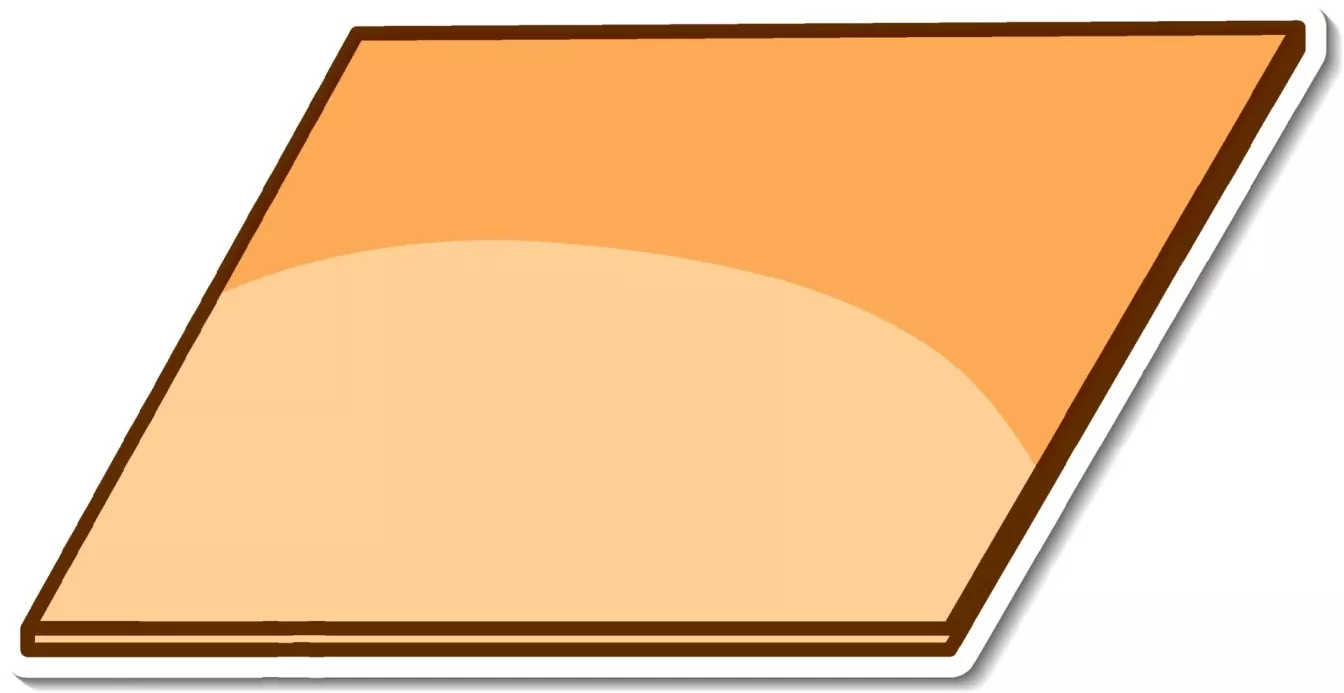Angle Properties
In this article, we are going to study about Angles as per the Primary 5 Maths requirements. We will be learning about the angle properties involving lines.
In this article, the learning objectives are:
- Adjacent angles on a straight line
- Angles at a point
- Vertically opposite angles
1. Adjacent Angles On A Straight Line
Adjacent angles on a straight line add up to \(180^\circ\).
\(\begin{align} \mathrm{\angle{a} + \angle{b}} = \mathrm{180^\circ} && \text{(angles on a straight line)} \end{align}\)
Question 1:
\(\mathrm{AB}\) is a straight line. Find \(\mathrm{\angle{b}}\).
Solution:
\(\begin{align*} \mathrm{\angle{b} + 45^\circ} &= \mathrm{180^\circ} & \text{(angles on a straight line)} \\[2ex] \mathrm{\angle{b}} &= \mathrm{180^\circ - 45^\circ}\\[2ex] &= \mathrm{135^\circ} \end{align*}\)
Answer:
\(135^\circ\)
Question 2:
The following figure is not drawn to scale. Find \(\mathrm{\angle{y}}\).
Solution:
\(\begin{align} \mathrm{\angle{y} + 88^\circ + 36^\circ} &= \mathrm{180^\circ} & \text{(angles on a straight line)} \\[2ex] \mathrm{\angle y} &= \mathrm{180^\circ - 88^\circ - 36^\circ} \\[2ex] &= \mathrm{56 ^\circ} \end{align}\)
Answer:
\(\mathrm{56^\circ}\)
Question 3:
In the figure below, \(\mathrm{KLM}\) is a straight line. \(\mathrm{\angle{KLN}} = \mathrm{122^\circ}\) and \(\mathrm{\angle{JLM}} = \mathrm{105^\circ}\). Find \(\mathrm{\angle{JLN}}\).
Solution:
\(\begin{align*} \mathrm{\angle{KLN} + \angle{NLM}} &= \mathrm{180^\circ} & \text{(angles on a straight line)}\\[2ex] \mathrm{122^\circ + \angle{NLM}} &= \mathrm{180^\circ} \\[2ex] \mathrm{\angle{NLM}} &= \mathrm{180^\circ - 122^\circ} \\[2ex] \mathrm{\angle{NLM}} &= \mathrm{58^\circ} \end{align*}\)
\(\begin{align*} \mathrm{\angle{JLN} + \angle{NLM}} &= \mathrm{105^\circ}\\[2ex] \mathrm{\angle{JLN} + 58^\circ} &= \mathrm{105^\circ}\\[2ex] \mathrm{\angle{JLN}} &= \mathrm{105^\circ - 58^\circ}\\[2ex] \mathrm{\angle{JLN}} &= \mathrm{47^\circ} \end{align*}\)
Answer:
\(\mathrm{47^\circ}\)
OR
\(\begin{align*} ∠JLM + ∠JLK &= 180º \;\;\;\;\;(angles \;on \;a \;straight \;line)\\ 105º + ∠JLK &= 180º\\ ∠JLK &= 180º - 105º\\ ∠JLK &= 75º\\ \end{align*} \)
\(\begin{align*} ∠JLK + ∠JLN &= 122º\\ 75º + ∠JLN &= 122º\\ ∠JLN &= 122º − 75º \\ &= 47º\\ \end {align*}\)
Answer:
\(47º\)
2. Angles At A Point
Angles at a point add to \(360º\).
\(∠a + ∠b + ∠c = 360º\) (angles at a point)
Question 1:
Find \(∠c\).
Solution:
\(\begin{align*} 140º + 60º + ∠c &= 360º \;\;\;\;\;\;\;\;\;\;\;\;\;\;\;\;\;\;\;\;\;\;(angles \;at \;a \;point)\\ ∠c &= 360º - 140º - 60º \\ &= 160º \\ \end{align*}\)
Answer:
\(160º\)
Question 2:
Find the sum of \(∠d\) and \(∠e\).
Solution:
\(\begin{align*} 75º + 75º + ∠d + ∠e &= 360º \;\;\;\;\;\;\;\;\;\;\;\;\;\;\;\;\;\;\;\;\;\;\;\;(angles \;at \;a \;point)\\ ∠d + ∠e &= 360º - 75º - 75º \\ &= 210º \end{align*}\)
Answer:
\(210º\)
Question 3:
The following figure is not drawn to scale. Find \(∠z\).
Solution:
\(\begin{align*} ∠z + 86º + 81º + 90º &= 360º \;\;\;\;\;\;\;\;\;(angles \;at \;a \;point) \\ ∠z &= 360º - 90º - 86º - 81º \\ ∠z &= 103º \\ \end{align*}\)
Answer:
\(103º\)
3. Vertically Opposite Angles
When two straight lines intersect, the opposite angles are equal. The point where they meet is called the vertex.
\(∠a = ∠c\) (vertically opposite angles)
\(∠b = ∠d\) (vertically opposite angles)
Question 1:
\(AB\) and \(CD\) are straight lines. Name the 2 pairs of angles that are equal.
Solution:
\(∠a\) and \(∠c\) are vertically opposite angles.
\(∠b\) and \(∠d\) are also vertically opposite angles.
As per the properties of vertically opposite angles,
\(∠a = ∠c\) and \(∠b = ∠d\)
Answer:
\(∠a = ∠c\) and \(∠b = ∠d\)
Question 2:
\(AB\) and \(CD\) are straight lines. Find \(∠b\).
Solution:
\(AB\) and \(CD\) are two straight lines that meet.
\(∠b = 35º\) (vertically opposite angles)
Answer:
35º
Question 3:
In the figure below, \(AB\) and \(CD\) are straight lines. \(∠AOC = 25º\).
- Find \(∠BOE\).
- Find \(∠AOD\).
Solution:
(a)
\(AB\) is a straight line.
\(\begin{align*} ∠AOC + ∠COE + ∠BOE &= 180º \;\;\;\;\;\;\;\;\;(angles \;on \;a \;straight \;line)\\ ∠BOE &= 180º - 25º - 90º\\ &= 65º\\ \end{align*}\)
(b)
\(AB\) and \(CD\) are two straight lines that intersect.
\(\begin{align*} ∠AOD &= ∠BOC \;\;\;\;\;\;\;\;\;(vertically \;opposite \;angles) \\ ∠AOD &= 90º + 25º \\ &= 115º \\ \end{align*}\)
Answer:
(a) \(65º\)
(b) \(115º\)
Question 4:
The figure below is not drawn to scale. \(AD\) and \(BC\) are straight lines. The ratio of \(∠a\) to \(∠b\) is \(3 : 2\). Find the difference between \(∠a\) and \(∠c\).
Solution:
\(BC\) is a straight line.
\(\begin{align*} ∠c + ∠AOC &= 180º \;\;\;\;\;\;\;(angles \;on \;a \;straight \;line)\\ ∠c &= 180º - 155º \\ &= 25º \\ \end{align*}\)
\(AD\) and \(BC\) are two straight lines that meet.
\(\begin{align*} ∠a + ∠b &= 155º \;\;\;\;\;\;\;(vertically \;opposite \;angles)\\\\ ∠a : ∠b &= 3 : 2 \\ \\ 5 \;units &= 155º \\ 1 \;unit &= 155º \div5 \\ &= 31º \\ \\ ∠a &= 3 \;units \\ &= 3 × 31º \\ &= 93º \\ \\ ∠b &= 2 \;units \\ &= 2 × 31º \\ &= 62º \\ \end{align*}\)
Difference between \(∠a\) and \(∠c\)
\(\begin{align*} &= 93º - 25º \\ &= 68º \\ \end{align*} \)
Answer:
\(68º\)
Conclusion
In this article, we learned about the different types of angles and their properties.
- Properties of angles involving lines
|
Angles On A Straight Line |
Angles At A Point |
Vertically Opposite Angles |
|
|
|
|
|
\(∠a + ∠b = 180º\) |
\(∠a + ∠b + ∠c = 360º\) |
\(∠a = ∠c\\ ∠b = ∠d\) |
 SG
SG  VN
VN 











